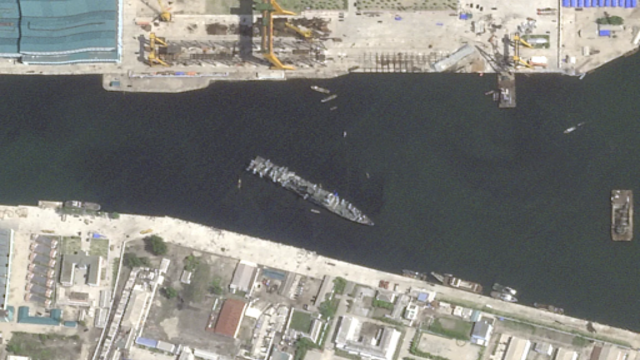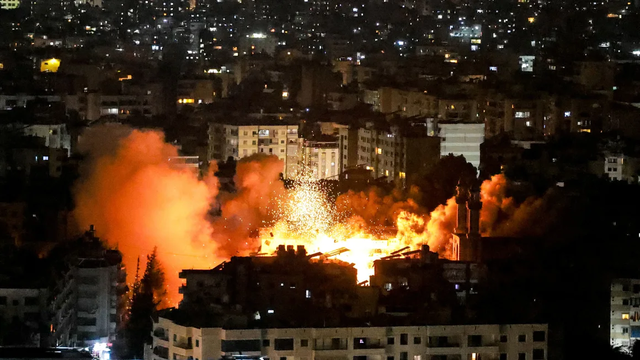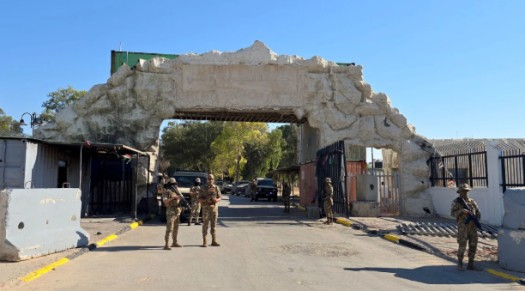
Flames engulf the area near vehicles as the Hughes Fire blazes in Castaic Lake, California, on January 22. Reuters
A new wildfire erupted on Wednesday, spreading rapidly across more than 9,400 acres north of Los Angeles. Strong winds and dry conditions fueled the blaze, named the Hughes Fire, prompting mandatory evacuation orders for over 31,000 residents in Los Angeles County. Another 23,000 people remain under evacuation warnings as firefighters race to contain the flames.
A helicopter releases water over the Hughes Fire as it rages in Castaic Lake, California, on January 22, 2025. Reuters
The fire, located about 50 miles from downtown Los Angeles, has escalated into a significant threat, particularly in the Castaic Lake area, where officials warned of an "immediate threat to life." Southern California is currently under a red-flag warning due to strong winds and prolonged dry weather, creating perfect conditions for wildfires to spread uncontrollably.
The Angeles National Forest, spanning 700,000 acres in the San Gabriel Mountains, has been closed to visitors to ensure public safety. Over 1,100 firefighters have been deployed throughout Southern California to manage the heightened risk of fires, while more than 4,000 personnel are specifically assigned to the Hughes Fire. Helicopters are scooping water from nearby lakes, and aircraft are dropping fire retardants to combat the flames.
Smoke and flames billow as firefighters and aircraft work to control the Hughes Fire near Castaic Lake, north of Santa Clarita, California, on January 22. Reuters
The Hughes Fire has already reached two-thirds the size of the Eaton Fire, one of two major blazes that have plagued the Los Angeles area since early January. Firefighters managed to bring the Eaton Fire, which scorched over 14,000 acres east of Los Angeles, to 91% containment. The larger Palisades Fire, consuming 23,448 acres on the city’s west side, is 68% contained.
The situation has left Southern California on edge. Interstate 5, a critical north-south highway, was temporarily closed due to heavy smoke in the Grapevine area but has since reopened as visibility improved.
Vehicles travel along a highway as smoke fills the sky in the background while firefighters and aircraft fight the Hughes Fire near Castaic Lake, north of Santa Clarita, California, on January 22, 2025. Reuters
Cal Fire officials revealed that the fires since January 7 have claimed 28 lives, destroyed nearly 16,000 structures, and displaced up to 180,000 people. These disasters have ravaged an area nearly the size of Washington, D.C., and caused estimated economic losses exceeding $250 billion, according to forecasts.
Despite the devastation, firefighters remain hopeful as weather reports predict rain over the weekend. Rainfall from Saturday through Monday could provide much-needed relief to the crews battling the flames.
Thick smoke from the Hughes Fire rises as firefighters and aircraft tackle the blaze near Castaic Lake, north of Santa Clarita, visible from a nearby highway in California on January 22, 2025. Reuters
Southern California has endured nine months without significant rain, making the landscape dangerously dry and fire-prone. However, in the past two weeks, smaller wildfires have been extinguished or brought under control, offering some hope amidst the ongoing crisis.
As efforts continue to contain the Hughes Fire, the resilience and coordination of the firefighters stand as a testament to the fight against nature's fury. Residents affected by the blaze are urged to stay informed and adhere to evacuation orders to ensure their safety.















